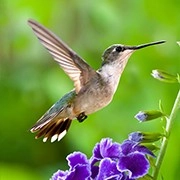Bringing Nature Home

Indoor greening, the art of introducing plants into indoor spaces, serves a multi-faceted purpose: it enhances air quality, elevates the quality of life, and creates aesthetically pleasing and inviting indoor environments.
Selecting the appropriate plants for your indoor setting is a pivotal step, as various plants exhibit distinct requirements and characteristics.
Part One: The Significance of Indoor Greening
Enhanced Air Quality
Indoor greening stands as a potent remedy to improve indoor air quality. Through the process of photosynthesis, plants absorb carbon dioxide and release life-sustaining oxygen, thereby augmenting the oxygen levels within indoor spaces.
Moreover, these green companions act as natural air purifiers, adept at absorbing harmful airborne substances like formaldehyde, benzene, and ammonia, thereby purging indoor air of pollutants and mitigating health risks.
The key to successful vegetable farming.
Painters must always take care to protect their own health and safety.
Parents can foster a love for the earth in their children.
Discover surprising airplane facts, from tiny window holes to safer back seats and the mystery of dimmed cabin lights.
Modern travel: From eco-friendly walking to high-speed rail, explore diverse mobility options.
Things to note as autumn arrives.
Elevated Quality of Life
Indoor greening possesses the transformative capacity to elevate the quality of both your living and working environments.
Research substantiates that spaces adorned with lush foliage have the potential to reduce stress levels, sharpen focus, alleviate fatigue, and bolster both physical and mental well-being, in stark contrast to spaces bereft of botanical life.
The innate beauty of plants serves as a source of visual delight, infusing indoor spaces with vibrancy and fostering heightened senses of pleasure and happiness.
Facilitation of a Natural Connection
In today's urbanized existence, the connection to the natural world often frays. Indoor greening serves as an avenue for individuals to rekindle their connection with nature. It allows observing the growth of plants and tending to their needs, fostering a deeper understanding and appreciation of the natural world.
Part Two: Choosing the Right Houseplants
1. Lighting Conditions
Different plants exhibit varying requirements for light. Some thrive in full sunlight, while others adapt well to lower light conditions. When selecting plants, it is essential to consider the prevailing light levels in your indoor environment.

High-light plants, such as cacti and succulents, thrive when exposed to direct sunlight or ample bright light.
Medium-light plants, including pothos and spider plants, flourish under bright, yet indirect sunlight.
Low-light plants, like ferns and maidenhair ferns, acclimate well to dimmer indoor spaces.
2. Moisture Requirements
Diverse plants have distinct water needs. Some necessitate regular watering, while others exhibit resilience to drought conditions. When choosing plants, consider your caregiving capacity and the availability of water resources. Here are examples of moisture preferences:
Plants with high water requirements, such as evergreens and succulents, need consistent watering while avoiding over-saturation to prevent root rot.
Plants with moderate water needs, like pothos and spider plants, generally benefit from regular, moderate watering to maintain soil moisture without becoming excessively wet.
Drought-tolerant plants, exemplified by cacti and agave, can endure longer periods without watering and are well-suited for busy individuals or indoor environments with low humidity.
3. Air Humidity
Certain plants thrive in environments with higher air humidity, while others are more tolerant of dry conditions. If your indoor space tends to be dry, contemplate selecting plants that can adapt to lower humidity levels, or employ a humidifier to raise humidity levels. Here are plants that accommodate varying humidity levels:
Plants that require high humidity, like ferns and geraniums, thrive in environments with elevated moisture levels. You can boost humidity by placing them in bathrooms or utilizing humidifiers.
Plants adapted to moderate humidity, such as pothos and prickly pear cacti, do not necessitate particularly high humidity and are suitable for typical indoor humidity levels.
Drought-tolerant plants, such as cacti and agave, can flourish in relatively arid conditions without requiring additional moisture management.
Indoor greening constitutes a rewarding endeavor that enhances indoor environments, uplifts the quality of life, and fosters a deeper connection with the natural world.
Prudent plant selection is paramount to the success of indoor greening. Revel in the benefits of indoor greening as you infuse your indoor spaces with greenery and vitality.

 · Information Team
· Information Team